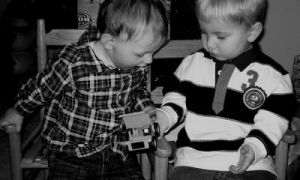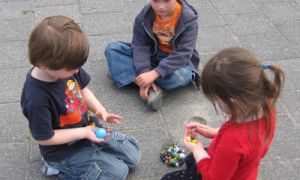The years between five and twelve are a time brimming with activity for children – they are developing close friendships, getting stronger in body and mind as well as widening their circle of hobbies and interests. While all this exploration makes for great learning and excitement, also sets the stage for some challenging behaviour. The following article provides information on strategies that Educators can use to promote positive behaviour in OOSH services.
Understand The Need To Feel and Express
First, it is necessary to understand the importance of feelings and the right of children to express it, albeit appropriately. Working with school-age children often means working with children early in the morning or after school. Thus by the time a child arrives at your service, they may be tired or angry after a difficult day at school. This may be expressed in behaviours like slinging the school bag across the room in a Family Day Care or Out of School Hours setting. Educators need to understand that children’s feelings of frustration or tiredness or anger are normal human emotions and then work with children to in helping them to express or work through their feelings in appropriate ways. And one of the most effective ways to do this is by reflective listening like by saying, “I know you feel frustrated at the moment, you seem to have had a tough day at school.” In this approach, educators reflect the child’s feelings in words that the child at their stage of development might understand. Used over time, reflective listening helps a child to use language (words) rather than throwing things or hurting another. As a child matures, they in turn are then more likely to express their needs or thoughts to others and thus, help to encourage and help each other
Recognise That They Are Not Adults
One of the important things to remember when trying to promote positive behaviour is that they are still children, not miniature adults. Compared to adults or even teenagers, children have fewer language skills, less experience in interacting with others and understand things in different ways. Thus there is little point in recriminations like, “come on, you should know better, you are in Grade 3 now”, or, “you are old enough to know better”. Instead of promoting positive behaviour, the humiliation implicit in these words is more likely to antagonize and anger them further. A far more effective approach would be to adopt simple, straightforward ways of redirection and encourage children to use appropriate, rather than inappropriate, ways to interact with others. This is best implemented through a two-pronged approach – proactive and reactive.
A proactive approach to promoting positive behaviour involves minimising opportunities for behaviours to become challenging. This draws upon children’s intrinsic because they know that if they behave, it helps themselves and others in productive ways. In contrast, extrinsic motivation would make children behave to avoid unpleasant external consequences like punishment and obtain external rewards like a toy. So when getting ready to bike outdoors, if an educator says to children, “You better put on helmets or the cops will stop us”, it is an example of extrinsic motivation. Intrinsic motivation would, on the other hand, make the educator say, “You need to wear your helmet so that you are safe on the road”.
How To Implement A Proactive Approach
Planning for the promotion of positive behaviour lies at the heart of a proactive approach; the three main areas addressed in this are:
- The environment - set up the environment in ways that best suit the stage of development of the children so that it both engages them and minimizes opportunities for frustration. This can be done by:
- Providing enough space for children to move easily and freely around the room without bumping into things
- Ensuring there are enough cosy corners and ‘escape’ places such as cubby houses made from a blanket, for children to have some personal space and time away from others
- Controlling heat and ventilation so that the air is not stuffy or too hot in winter
- Offering children a range of activities and play areas so children can choose to do what interests them.
- Arranging for plenty of outdoor time for play and exercise
- The program – plans activities and experiences in a way that children feel genuinely interested and have a sense of ownership in the program. This can be done by:
- Facilitating shared decision-making in the planning of activities and experiences thereby, minimising chances of task refusal and disruption.
- Providing creative art opportunities so that not all children are expected to reproduce something that an adult or another child has made.
- Providing plenty of time for long uninterrupted playtime; being interrupted or hurried can annoy children who have already been listening to instructions all day at school.
- Having small groups rather than large groups and providing lots of time for children to play on their own if they wish.
- The adult – the most important factor determining the effectiveness of the proactive approach is the role of the educator. Among the ways educators can help are:
- Establishing an authentic and respectful relationship with each child
- Providing opportunities for children to attach and develop trust with the educator
- Respecting and reflecting the feelings of each child
- Respecting the culture and family of each child
- Holding realistic expectations of children
- Using language that is appropriate to a child’s understanding
- Avoiding using sarcasm, ‘putdowns’ or negative language with a child
- Encouraging each child and affirming something they have done during each day
- Role modelling their own behaviours and interactions with others so that children can observe and practice how to behave
No matter how carefully an educator plans the environment, program and practices, there are bound to be moments when children act in inappropriate and even harmful ways. To deal with such situations, educators need to add to their of behaviour management toolkit some reactive strategies as well, including:
- Taking a moment to think before responding. This gives educators a brief window to remain calm and assess the situation at hand. Needless to say, if a child is in danger, then there is no question of waiting at all.
- reflective listening to provide words for the child if they appear frustrated, angry or upset. For example, if a child wants the very same block another child is playing with and as a result, knocks down the letters tower, the educator can use reflective listening to say something like, “I know you are frustrated because you wanted that block and it is hard when you can’t have what you want, but it is not okay to mess up someone else’s blocks. If you want to continue to play here, you will have to stay away from the other child’s blocks.”. With such a strategy, the educator is able to show their understanding that it is normal to feel frustrated when you cannot have something when you want it, but also that it is not okay to interfere or hurt or mess up someone else’s game because you are frustrated.
- less adjudicating. Educators are often called upon to decide whose turn it is now to take the swing or who saw the ball first. As much as possible, avoid getting drawn into such arguments - unless you saw the actual incident, it is too difficult to know what really happened and usually prolongs the issue.
- Providing consequences if a child is mature enough to understand that their actions or choices will result in a particular outcome. For example, If two children are fighting or arguing over the same piece of equipment you might allow the child to make a decision or if they are unable to do so, say that “If you can’t sort out who had the ball first then the ball will be put away”. It is important that a consequence is not viewed by the educator as a threat or as a punishment but rather as an opportunity to let the children or child make a decision, change their behaviour or find a solution.
- Redirecting the child away from the stressful situation. If a child repeatedly behaves in a disruptive or harmful manner, then leading them quietly but firmly to another part of the room may be appropriate. This should not be seen as the traditional ‘time out’ punishment where children were put on a ‘naughty chair’ or told to sit a corner, facing the wall. The removal should only be for a short time, perhaps 30 seconds, or just until the child has calmed down. The removal place should still be within the program and room and not be seen by any child as the punishment area - just a place away from where the disruption occurred.
- Using positive, specific language. For example; “please walk inside”, instead of “don’t run inside”. This not only dissuades the child from running but more importantly, helps them to know what to do instead – walk, not run. Similarly an instruction at the lunch table, ‘sit nicely” is vague to the child who does not know what the adult means by nice; far more effective phrases might be, ‘sit still, ‘sit quietly’, or ‘use your quiet voice.
- Being consistent. It is crucial that once you have made a decision or set a rule, you carry through with a consequence. If you are seen to dither or change your mind, it will make it that much harder for children to work on their own behaviour.
Further Reading
Descriptive Words For Children's Behaviour - The following lists descriptive words and their meanings that can be used to describe a child's behaviour.
Redirecting Children's Behaviour - The following article provides information on How Redirecting Behaviour Help, Types Of Redirecting Behaviour, Redirecting Behaviour Strategies and more.
Stages Of Behaviour - The following article provides information on the ages and stages of behaviour and strategies for each age.
Supporting Children With Challenging Behaviour - The following article provides information on the Impacts of Challenging Behaviour, Gathering Information, Addressing Challenging Behaviours, Involving Support Services, Reviewing The Program, Planning, Implementing and Reviewing Interview Strategies and more.
Anger Management In Children - The following article provides effective anger management techniques, that support children positively with their anger.
Aggressive Behaviour And Violence In Children: Prevention, Intervention and Support - The following article will provide information on What Is Aggressive Behaviour, Prevention Strategies, Intervention Strategies and more.
Strategies For Dealing With Physical Aggression In Children - The following article provides information on Strategies To Deal With Specific Types Of Physical Aggression, General Strategies and Long Term Strategies For Physical Aggression and more.
References:
Planning and Positive Behaviour For 5 - 12 Years Old, ACECQA




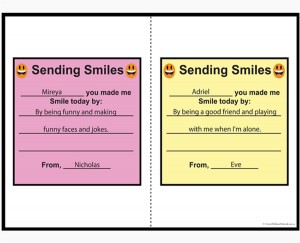


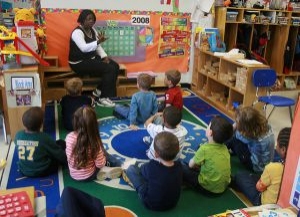 Working as a childcare professional can be a challenge especially when dealing with behavioural problems which may arise. The techniques we use when dealing with
Working as a childcare professional can be a challenge especially when dealing with behavioural problems which may arise. The techniques we use when dealing with There are different types of behaviour that children can display and sometimes it can be hard to manage, especially if a child is having behavioural
There are different types of behaviour that children can display and sometimes it can be hard to manage, especially if a child is having behavioural As a parent, your behavioural expectations of your child can be higher than what is actually developmentally appropriate for your child's age.
As a parent, your behavioural expectations of your child can be higher than what is actually developmentally appropriate for your child's age.
 As Educators, there will be many instances where you will need to write about a child's behaviour. For a behaviour management plan, assessments, half-yearly or
As Educators, there will be many instances where you will need to write about a child's behaviour. For a behaviour management plan, assessments, half-yearly or As Educators when communicating with Parents (through verbal or non-verbal communication), there will be times where we need to discuss issues or concerns that may
As Educators when communicating with Parents (through verbal or non-verbal communication), there will be times where we need to discuss issues or concerns that may As part of your child's development it is normal for your child to have anxiety and fears. A baby commonly shows a fearful sign to
As part of your child's development it is normal for your child to have anxiety and fears. A baby commonly shows a fearful sign to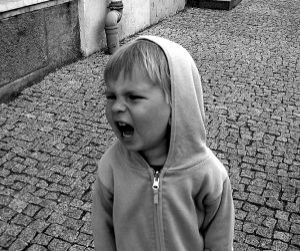 All children deal with anger on a daily basis. Thinking about it as a child, there is a lot to be angry about. Elder people
All children deal with anger on a daily basis. Thinking about it as a child, there is a lot to be angry about. Elder people It is important to understand that your child behaviour problems could not just be from attention seeking. There are many factors to take into consideration
It is important to understand that your child behaviour problems could not just be from attention seeking. There are many factors to take into consideration It's always difficult to bring up behavioural issues with parents, it can be nerve wrecking to tell a parent that their child misbehaves but that
It's always difficult to bring up behavioural issues with parents, it can be nerve wrecking to tell a parent that their child misbehaves but that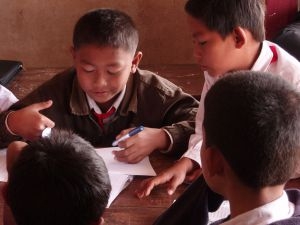 Attention deficit hyperactivity disorder (ADHD) is a psychiatric disorder of the neurodevelopmental type in which there are significant problems of attention and/or hyperactivity and acting
Attention deficit hyperactivity disorder (ADHD) is a psychiatric disorder of the neurodevelopmental type in which there are significant problems of attention and/or hyperactivity and acting